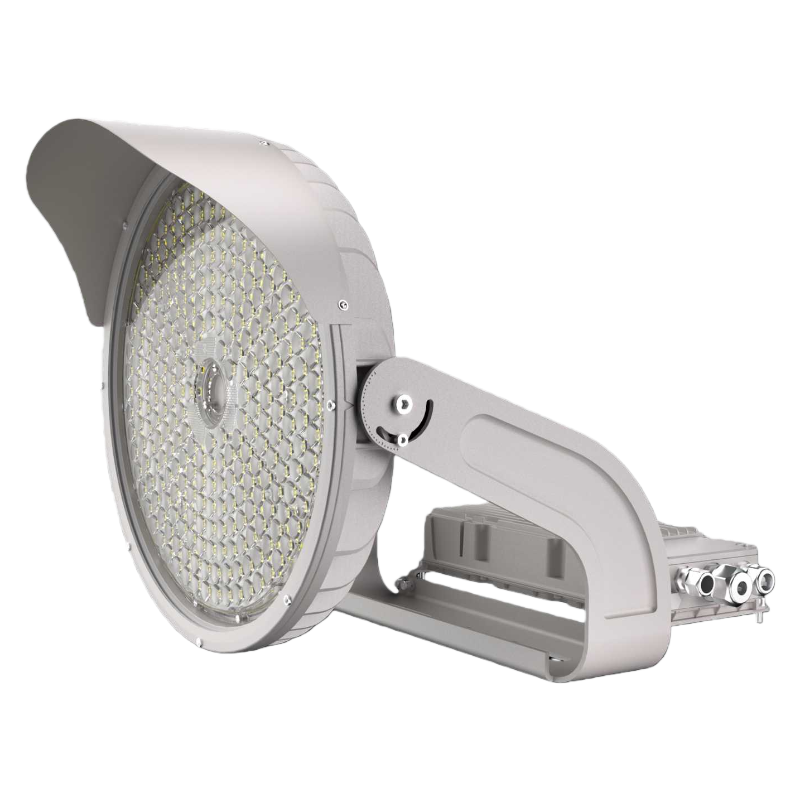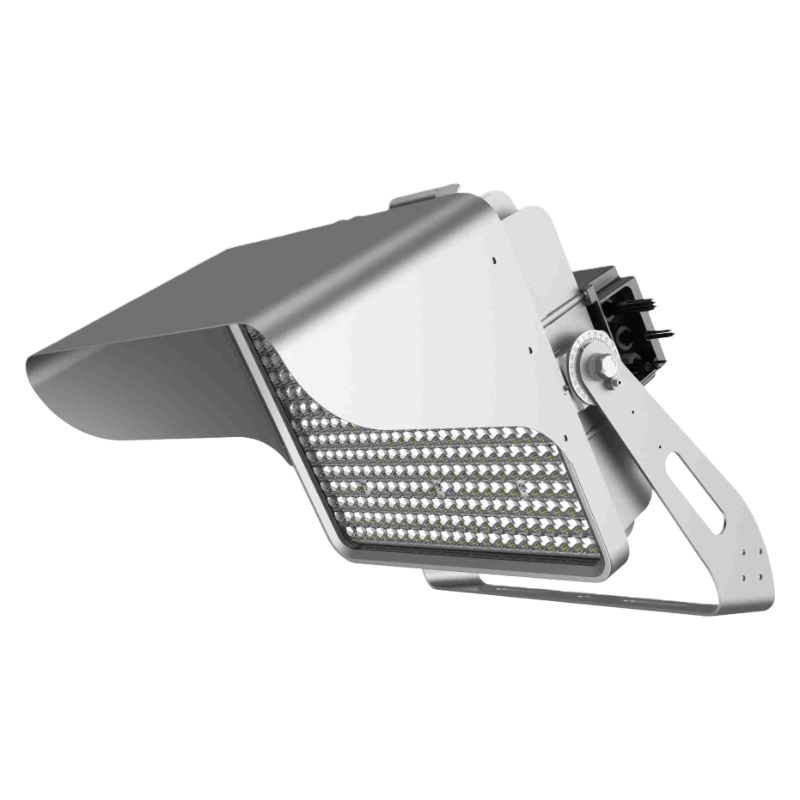High-Efficiency LED Shoebox Lights for Parking Lots
High-Efficiency LED Shoebox Lights: Transforming Parking Lot Lighting
Parking lots are essential spaces for commercial buildings, shopping malls, hospitals, and municipal facilities, and their lighting directly impacts safety, security, and operational costs. In recent years, high-efficiency LED shoebox lights have emerged as the gold standard for parking lot illumination, replacing traditional metal halide, high-pressure sodium, and fluorescent fixtures. With their exceptional energy efficiency, long lifespan, and superior light quality, these lights not only reduce operational expenses but also enhance the overall user experience. This guide delves into the key benefits, applications, technical considerations, and strategies of high-efficiency LED shoebox lights for parking lots.
Key Advantages of High-Efficiency LED Shoebox Lights
The adoption of high-efficiency LED shoebox lights in parking lots is driven by a range of compelling benefits that address the limitations of conventional lighting solutions.
1. Unmatched Energy Efficiency
One of the most significant advantages of LED shoebox lights is their energy efficiency. Traditional metal halide lights typically operate at 150-400 watts, while high-efficiency LED alternatives provide the same or better illumination at just 50-200 watts. This translates to energy savings of 50%-70% on lighting bills. For example, a shopping mall with 50 parking lot lights using 250W metal halides (total 12,500W) can switch to 100W LED shoebox lights (total 5,000W), reducing annual energy consumption by approximately 65,700 kWh (based on 12 hours of daily operation). At an average electricity rate of $0.15/kWh, this equates to annual savings of over $9,800.
2. Extremely Long Lifespan
LED technology boasts an impressively long lifespan compared to traditional lighting. High-quality LED shoebox lights have an average lifespan of 50,000-100,000 hours, while metal halide lights last only 10,000-20,000 hours. This means LED lights can operate for 10-20 years with minimal replacement, significantly reducing maintenance costs and labor expenses. For facilities managers, this translates to fewer service calls, less downtime, and lower total cost of ownership (TCO) over the long term.
3. Superior Light Quality & Safety
High-efficiency LED shoebox lights deliver consistent, bright light with excellent color rendering index (CRI) and correlated color temperature (CCT). A high CRI (80+) ensures that colors appear true to life, making it easier for drivers and pedestrians to identify objects, signs, and potential hazards. CCT options range from 3000K (warm white) to 6500K (cool white), with 5000K being the ideal choice for parking lots as it balances visibility and comfort. Additionally, LED lights have instant-on functionality, eliminating the warm-up time required by metal halide lights, and they maintain consistent brightness throughout their lifespan, unlike sodium lights, which dim over time.
4. Durability & Weather Resistance
Parking lot lights are exposed to harsh outdoor conditions, including rain, snow, extreme temperatures, and humidity. High-efficiency LED shoebox lights are designed with robust housings made of aluminum or die-cast metal, featuring an IP65 or higher ingress protection rating. This ensures they are dust-tight and resistant to low-pressure water jets, making them suitable for all weather conditions. LED lights also have no fragile filaments or glass components, reducing the risk of damage from vibration or impact.
Applications & Design Considerations for Parking Lots
High-efficiency LED shoebox lights are versatile and can be used in various parking lot settings, from small commercial lots to large municipal parking garages and stadium parking areas. When designing a parking lot lighting system with LED shoebox lights, several key factors should be considered.
1. Light Distribution & Mounting Height
LED shoebox lights are available in different beam angles (120°, 150°, 180°) to suit various parking lot layouts. Wide beam angles (150°-180°) are ideal for large open areas, while narrower beam angles are suitable for illuminating specific zones or walkways. Mounting height is also crucial: lights mounted at 15-25 feet are optimal for most parking lots, as they provide uniform coverage without creating glare. For larger lots, a combination of different beam angles and mounting heights can ensure consistent illumination across the entire space.
2. Dimming & Smart Controls
Many high-efficiency LED shoebox lights are compatible with dimming systems and smart controls, such as motion sensors, photocells, and IoT-enabled platforms. Motion sensors can detect vehicle or pedestrian activity, increasing brightness when needed and dimming to a lower level (e.g., 30%) during inactive periods, further reducing energy consumption. Photocells automatically turn lights on at dusk and off at dawn, eliminating the need for manual operation. Smart controls also allow facilities managers to monitor and adjust lighting remotely, providing real-time data on energy usage and maintenance needs.
3. Compliance with Lighting Standards
Parking lot lighting must comply with local building codes and industry standards, such as those set by the Illuminating Engineering Society (IES). These standards specify minimum illuminance levels (measured in foot-candles) for different areas of the parking lot: for example, main driving lanes typically require 2-5 fc, while pedestrian walkways require 1-3 fc. High-efficiency LED shoebox lights are designed to meet these standards, ensuring safety and compliance while minimizing energy use.
How to Choose the Right High-Efficiency LED Shoebox Lights
Selecting the best high-efficiency LED shoebox lights for your parking lot requires careful evaluation of several factors.
-
Wattage & Lumen Output: Calculate the required lumen output based on the size of your parking lot and desired illuminance levels. A general rule of thumb is 20-30 lumens per square foot for parking lots. For example, a 10,000-square-foot lot would require 200,000-300,000 total lumens.
-
Quality & Certification: Choose lights from reputable manufacturers with certifications such as DLC (DesignLights Consortium), ETL, or UL. These certifications ensure the lights meet strict quality, safety, and energy efficiency standards.
-
Warranty: Look for lights with a long warranty period (5-10 years), as this indicates the manufacturer’s confidence in the product’s durability. A comprehensive warranty should cover defects in materials and workmanship, as well as performance issues.
-
Total Cost of Ownership (TCO): While LED shoebox lights have a higher upfront cost than traditional lights, their lower energy and maintenance costs result in a lower TCO over time. Calculate TCO by considering upfront purchase price, energy savings, maintenance costs, and lifespan to make an informed decision.
Conclusion
High-efficiency LED shoebox lights are a game-changer for parking lot lighting, offering unparalleled energy savings, long lifespan, superior light quality, and durability. By investing in these lights, facility owners and managers can reduce operational costs, enhance safety and security, and create a better experience for drivers and pedestrians. When selecting LED shoebox lights, consider factors such as wattage, lumen output, beam angle, smart controls, and compliance with industry standards to ensure the best results. With the right lighting solution, your parking lot can become more efficient, safe, and sustainable for years to come.











